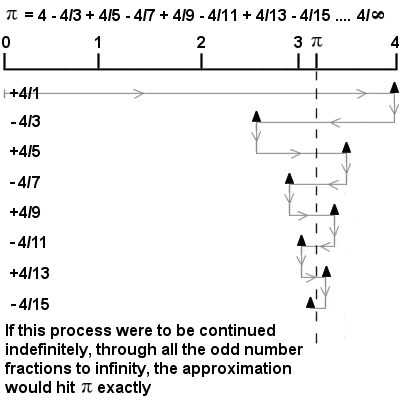MADHAVA: THE FOUNDER OF THE KERALA SCHOOL
 |
Madhava of Sangamagrama (c.1350-1425) |
Madhava sometimes called the greatest mathematician-astronomer of medieval India. He came from the town of Sangamagrama in Kerala, near the southern tip of India, and founded the Kerala School of Astronomy and Mathematics in the late 14th Century.
Although almost all of Madhava’s original work is lost, he is referred to in the work of later Kerala mathematicians as the source for several infinite series expansions (including the sine, cosine, tangent and arctangent functions and the value of π), representing the first steps from the traditional finite processes of algebra to considerations of the infinite, with its implications for the future development of calculus and mathematical analysis.
Unlike most previous cultures, which had been rather nervous about the concept of infinity, Madhava was more than happy to play around with infinity, particularly infinite series. He showed how, although one can be approximated by adding a half plus a quarter plus an eighth plus a sixteenth, etc, (as even the ancient Egyptians and Greeks had known), the exact total of one can only be achieved by adding up infinitely many fractions.
Madhava Series
 |
Madhava’s method for approximating π by an infinite series of fractions |
But Madhava went further and linked the idea of an infinite series with geometry and trigonometry. He realized that, by successively adding and subtracting different odd number fractions to infinity, he could home in on an exact formula for π (this was two centuries before Leibniz was to come to the same conclusion in Europe). Through his application of this series, Madhava obtained a value for π correct to an astonishing 13 decimal places.
He went on to use the same mathematics to obtain infinite series expressions for the sine formula, which could then be used to calculate the sine of any angle to any degree of accuracy, as well as for other trigonometric functions like cosine, tangent and arctangent. Perhaps even more remarkable, though, is that he also gave estimates of the error term or correction term, implying that he quite understood the limit nature of the infinite series.
Madhava’s use of infinite series to approximate a range of trigonometric functions, which were further developed by his successors at the Kerala School, effectively laid the foundations for the later development of calculus and analysis, and either he or his disciples developed an early form of integration for simple functions. Some historians have suggested that Madhava’s work, through the writings of the Kerala School, may have been transmitted to Europe via Jesuit missionaries and traders who were active around the ancient port of Cochin (Kochi) at the time, and may have had an influence on later European developments in calculus.
Among his other contributions, Madhava discovered the solutions of some transcendental equations by a process of iteration, and found approximations for some transcendental numbers by continued fractions. In astronomy, he discovered a procedure to determine the positions of the Moon every 36 minutes, and methods to estimate the motions of the planets.
<< Back to Brahmagupta | Forward to Islamic Mathematics >> |
